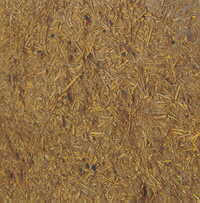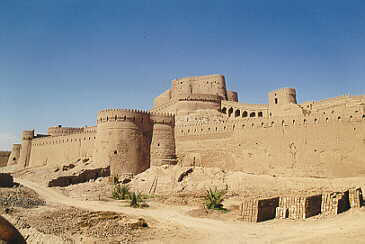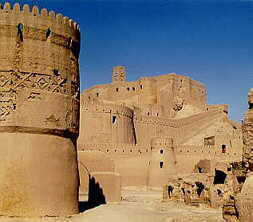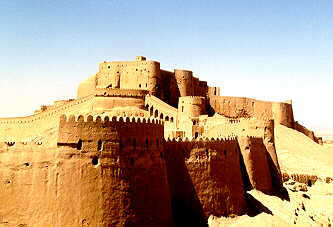http://www.cnn.com/2003/WORLD/meast/12/ ... index.html
TEHRAN, Iran (CNN) -- Battling near freezing temperatures and working in complete darkness, rescuers struggled throughout the night and into Saturday in their search for anyone buried alive after a devastating earthquake in southeastern Iran.
The earthquake struck before dawn on Friday, destroying most of the ancient Silk Road city of Bam and killing at least 5,000 people -- though government officials fear more than 20,000 are dead.
More than 30,000 were reported injured in the city, about 610 miles (975 kilometers) southeast of the capital, Tehran.
As Iran began three days of mourning, tens of thousands of survivors spent Friday night in the streets in bitter cold with temperatures plummeting to below 0 degrees Celsius, many of them wearing little more than at the time of the quake.
The historic city was without water, gas or electricity as night fell. (Survivors try to cope)
Bonfires provided some respite from the cold, until a new dawn shed more light on the devastation caused by the 6.3 magnitude quake.
As much as 80 percent of Bam was destroyed, the U.N. Office for Coordination of Humanitarian Affairs said, including both of the city's hospitals -- forcing people to seek medical attention in the provincial capital, Kerman, about 160 km or 100 miles northwest.
The ruins and rubble have hampered rescue efforts with little evidence of outside relief reaching the city, The Associated Press reported.
The city was awaiting international aid and rescue equipment to help in the search for survivors, journalist Shrizad Bozorgmehr told CNN on Saturday.
Call for help
Turkey, Russia, Spain, Britain and the United States are among the nations responding to Iran's call for help.
Turkey plans to send "every possible assistance," including "tents, food, medicine -- whatever is needed," said a spokesman for the Foreign Ministry in Ankara.
More than 120 Russian emergency and medical officials will head to the disaster scene, along with equipment, a Russian emergency official said.
An aide to Spain's foreign minister said that nation is prepared to send humanitarian aid of various types.
The U.S. government said it is geared up to offer help, with the State Department drawing up a plan.
"We are offering humanitarian assistance," White House spokesman Scott McClellan said aboard Air Force One.
President Bush issued a statement saying that Americans "stand ready to help the people of Iran."
British Foreign Secretary Jack Straw spoke to Iranian Foreign Minister Kamal Kharrazi and offered the services of two specialized search-and-rescue teams. Kharrazi welcomed the offer, and arrangements are under way through the Department for International Development, Straw said.
Five Iranian Red Crescent Society emergency relief teams from neighboring provinces have been sent to Bam.
The society has deployed two field hospitals and two helicopters to ferry the severely injured to hospitals as well as provide tents and medical supplies. Local volunteers also are assisting.
"The immediate priority is the search-and-rescue phase -- ensuring that survivors are located, given medical attention and transferred to the hospital," Mostafa Mohaghegh of the Iranian Red Crescent Society said in a statement.
The U.N. disaster management team in Tehran is sending two groups to the affected area "to collect, verify, and compile information on the extent and impact of the earthquake."
Bodies of some of those killed in the earthquake are lined up in a cemetery in Bam.
The U.N. Office for the Coordination of Humanitarian Affairs is dispatching a 10-person team to assist in relief coordination. The office said it has made an initial $90,000 grant and is mobilizing 36-40 tons of relief items. These include blankets, kitchen sets, water distribution and purification units, high-energy biscuits and trauma kits.
City turned to rubble
Hours after the quake, Bam resembled a war zone, with smoke rising from collapsed buildings and many people kneeling in the rubble.
Bam was not built to withstand an earthquake, even though fault lines crisscross Iran. In 1990, 35,000 people died when an earthquake hit northwest Iran.
Its main tourist draw, the 2,000-year-old citadel Arg-e-Bam, was destroyed. It was on the United Nations Educational, Scientific and Cultural Organization's register.
"The historic quarter of the city has been completely destroyed and caused great human loss," Nour Bakhsh with the Red Crescent relief agency told the Iranian news agency.
-- CNN's Al Goodman and Ryan Chilcote, and journalists Andrew Finkel and Shirzad Bozorgmehr, contributed to this report.








